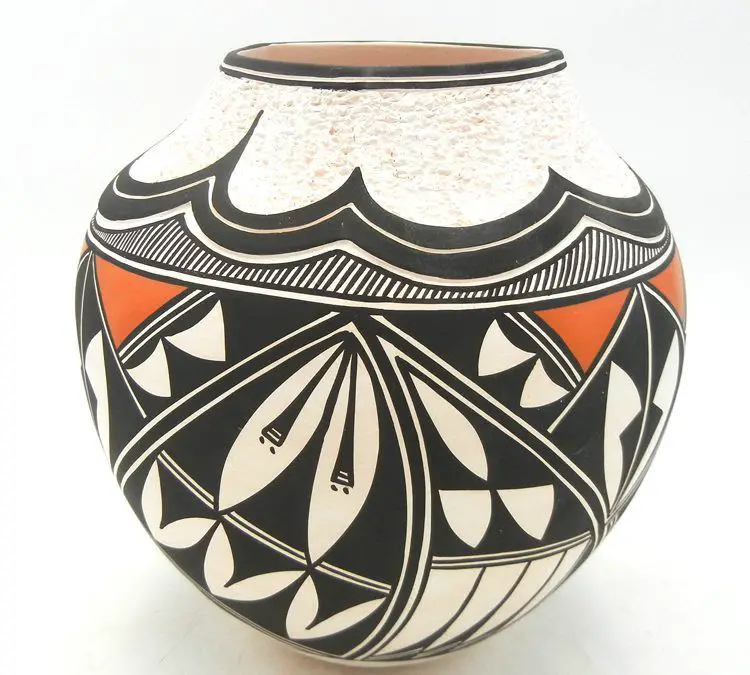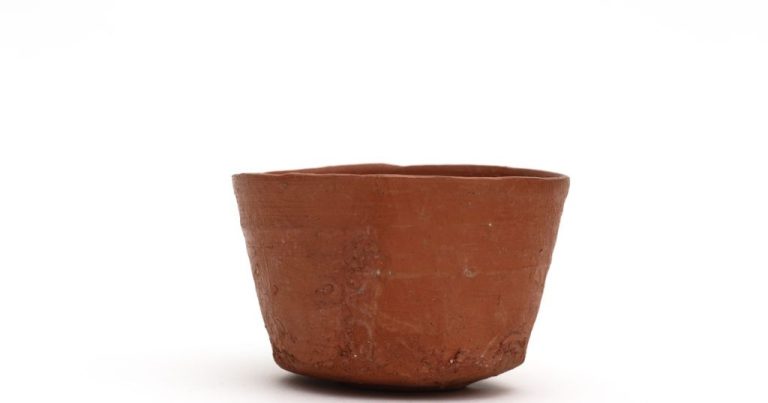Are Clay Teapots Better?
Clay teapots, especially those made from Yixing clay, have a long and storied history in China. They are intricately handmade works of art that are beloved for their ability to enhance the tea drinking experience. This article will provide an overview of clay teapots, focusing specifically on their history, design, benefits, and proper care. We’ll explore why clay is considered the ideal material for brewing tea, and how the porous nature of Yixing clay allows it to absorb tea over time and improve the flavor. Key differences between clay and other materials like glass or ceramic will be examined. The purpose is to inform readers on the rich history and continued popularity of clay teapots in tea culture.
Clay Teapot History
Clay teapots originated in China during the Song dynasty around the 15th century in areas like Yixing, which is known for its purple clay. The teapots were initially created to brew and enjoy tea, which was an important part of Chinese culture. Traditional Yixing teapots are handmade from clay quarried locally and then fired without a glaze. The porous clay helps bring out the flavor of the tea.
Yixing teapots come in various traditional styles like the Squat Round shape perfect for oolong tea or the Pear shape good for flowering teas. There are also modern styles like the Hexagonal that offers angular designs. The clay can come in different colors like purple, brown, yellow, blue and more. Skilled teapot artists continue ancient traditions but also add new innovations in shape and style.
Other regions famous for clay teapots include areas of Japan like Tokoname, which produces unglazed teapots known as kyusu. Portugal and Morocco also have their own distinctive clay teapot designs and traditions as teapots spread via the Silk Road trade routes. While styles evolved, clay remains popular for teapots due to its natural insulating properties and ability to enhance tea flavors.
Source: https://www.authenticyixing.com/history/
Tea Culture Connection
Clay teapots, especially yixing teapots from China, play an important cultural and spiritual role in tea culture. They are an integral part of Chinese gongfu tea ceremonies and Japanese chanoyu tea ceremonies, where the teapot is viewed as an extension of the self and a work of art.
In Chinese culture, yixing teapots are said to absorb the essence or “qi” of the tea over repeated brewings, imparting it back into the tea and improving its flavor. They are treasured heirlooms passed down through generations. The preparation and pouring of tea is considered meditative, bringing harmony between the drinker, teapot and tea (Arogya Holistic Healing).
In Japanese tea ceremony, the choice of an aesthetically pleasing yet humble teapot is an important symbolic act reflecting the host’s respect for guests. Only powdered green tea is used so the teapot can blend and froth the tea. The teapot embodies key values like harmony, purity, tranquility and respect in this spiritual tradition.
Making Clay Teapots
To make a clay teapot, the first step is to choose the right clay material. Common clays used in teapot making include red earthenware, stoneware, porcelain, and Yixing clay. Earthenware is porous, affordable, and easy to work with while still being functional, making it a popular choice. Stoneware is denser, more durable, and watertight. Porcelain is delicate, white, and translucent when fired to a high temperature. Yixing clay from China can come in various colors and is prized for retaining heat and acquiring a natural patina from repeated brewing1.
The basic process of handcrafting a clay teapot starts with centering a ball of clay on the wheel and opening it up into a bowl shape. Coils of clay are added to shape the body, spout, and handle. The lid can be crafted from a flattened piece of clay. Artisans employ various techniques to emboss designs, carve patterns, or attach decorative elements. Once the teapot is formed, it is left to dry before firing in a kiln at high heat to harden and set the clay. The teapot may go through multiple firings and glazings to finish the surface.
Making clay teapots by hand is an artisanal craft perfected over centuries. Skilled potters can shape teapots with a refined symmetry and delicate thinness using the wheel. Textures are created through techniques like ribbing and burnishing the surface. Handbuilt elements like spouts or handles are artfully blended into the pot. The mark of the maker is left in subtle impressions and variations that give each piece a unique character2.

Clay Teapot Designs
Clay teapots come in a wide variety of unique shapes and aesthetic styles. The fluid nature of clay allows artisans great freedom in sculpting flowing, organic forms. Teapots may have round, squat bodies or tall, slender profiles. Spouts and handles can swoop and curve gracefully. Decorative elements like ribs, dots, geometric patterns, or small sculpted elements may embellish the surface.
Notable clay teapot styles include the Yixing teapots of China, with their earthy brown color and embellished with motifs like dragons, flowers, or calligraphy. In Japan, Hagi ware teapots have a rustic, handcrafted look with dripped glazes. Other regions like England and Korea also have distinctive clay teapot-making traditions.
Many contemporary ceramic artists design one-of-a-kind teapots that double as artworks. Their imaginative shapes and decor explore the boundaries of function and beauty. The irregularity of handmade clay allows for “imperfect perfection” that has an organic, human quality.
Clay as a medium enables an unparalleled diversity of teapot designs not possible with glass or metal. Collectors will find a wide selection of styles to suit any taste and decor.
Clay Teapot Features and Benefits
Clay teapots, especially those made from Yixing clay, have some unique features and benefits compared to teapots made from other materials:
Heat Retention – The porous nature of clay allows it to absorb heat and retain it effectively. This helps keep the tea at the optimal steeping temperature for longer.1
Natural Cooling – As the teapot absorbs heat, evaporation occurs through the porous walls and cools the tea naturally. This prevents oversteeping or scalding.2
Flavor Enhancement – The clay absorbs flavors from the teas brewed in it over time. This enhances and seasons the flavor of the tea.
Durability – High quality clay is very durable and can last for decades with proper care.
Downsides of Clay Teapots
While clay teapots have many benefits, there are some downsides to consider as well:
Heavy and Fragile – Clay teapots tend to be heavier than glass or ceramic options. The material is also more fragile if dropped or impacted, especially when hot. As one article notes, “some clays do crack easier than others when dried and baked” (https://www.quora.com/How-long-do-clay-teapots-last-Is-it-safe-to-use-an-old-clay-teapot-for-drinking-hot-water-and-making-tea). So clay requires more careful handling.
Requires Care in Cleaning – Clay is porous, so tea stains can set in over time. Proper cleaning after each use is important to prevent buildup and preserve the teapot. Avoid harsh detergents that could strip the clay. Instead, gentle handwashing is best.
Longer Brew Times – The thickness of clay dissipates heat more than thin glassware. This means clay teapots require a longer time to fully brew tea, sometimes doubling the ideal brew time. The flavor profile can change with overbrewing.
Clay vs. Glass, Ceramic, Etc.
Clay teapots have excellent heat retention compared to glass, ceramic, and other materials. The porous nature of clay allows it to absorb heat and keep water at the ideal brewing temperature for longer (Source). This is especially beneficial when brewing teas that require high temperatures like oolongs and pu-erh. The heat retention properties of clay are ideal for gongfu style brewing that involves multiple short steeps.
In terms of flavor, many believe clay imparts a subtle earthy taste and smooth mouthfeel. According to tea enthusiasts, teas like oolongs and pu-erhs taste best when brewed in Yixing clay teapots (Source). The porous nature of clay allows it to absorb subtle flavors and aromas over time.
Clay teapots are quite durable if cared for properly, but can stain and show signs of wear more easily than glass or ceramic. Porcelain and bone china ceramic teapots have a more delicate feel, but are chip and stain-resistant. Glass allows you to watch the brewing process, but does not retain heat as well. Overall, clay offers unique benefits in heat retention and influence on flavor, making it a popular choice for serious tea enthusiasts.
Caring for Clay Teapots
Properly caring for your clay teapot is essential to preserving its beauty and function. Clay is porous, so it’s important to avoid harsh cleaning methods that could damage the material. Here are some tips for keeping your clay teapot in great shape:
For cleaning, avoid using soap or detergent on the clay, as it can seep into the porous material and affect the flavor of the tea. Instead, simply rinse the teapot with hot water after each use. For a more thorough cleaning, you can use a soft cloth or brush to gently scrub the inside. Let the teapot air dry completely before storing, as trapped moisture can cause mold or cracks over time.
When storing your clay teapot, place it in a dry location out of direct sunlight. Sunlight and drastic temperature changes can cause the clay to expand and contract, eventually leading to cracks. You may wish to keep the teapot in its original box for protection. Avoid stacking other items on top of the teapot that could lead to chips or cracks.
With careful handling and regular cleaning, a high quality clay teapot can last for many years of enjoyable tea brewing. Avoid banging or dropping the teapot, as the clay can chip or shatter. With proper care and maintenance, your clay teapot will develop a beautiful seasoned patina over time.
Conclusion
In conclusion, clay teapots have a long cultural history and remain popular today for good reason. The natural clay material keeps tea hot for longer and imparts an earthy flavor. The diversity of shapes, designs, and artistic decorations make clay teapots stand out aesthetically. Clay conducts heat well and showcases the tea’s color and aromas. While fragile, with proper care clay teapots can last for many years of daily use.
Clay teapots connect us to ancient tea traditions in a way few other vessels can replicate. They brew tea beautifully and feel soothing to the hands. For tea lovers looking to enhance their tea drinking rituals, clay teapots are an excellent option to consider. Their artisanal craftsmanship and traditional roots appeal to many. With proper research into models and regular cleaning, clay teapots can be an investment that rewards for decades.


